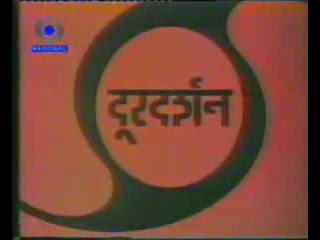If this does not happen, the operators fear that they may lose their subscribers to DTH service or to new cable operators Those...

Those were the days when the avid television watchers in Madurai used to
eagerly wait for Fridays and Sundays. ‘Oliyum Oliyum' (film songs-based
programme) and Tamil feature film telecast on these respective days
were the most popular programmes on the only television channel beamed
till the 1980s.

However, many households in southern districts had a second antenna to
capture the feeble signal of Roopavahini, a television channel popularly
known as Ceylon TV. Besides All India Radio and Doordarshan, the only
entertainment for the people was the cinema house.
Technological advancements saw the advent of video cassette
player/recorder (VCP/VCR). However, it remained a luxury for the
majority of middle class then.
A few educated unemployed youth tried to fill the vacuum on the
entertainment front. They laid overhead cables on the streets to give
additional entertainment. Small rooms, where a VCP/VCR was used, turned
out to be the control room from where they played two feature films a
day. They collected a nominal subscription of Rs. 30 to Rs. 40 a month.
This sowed the seed for the cable television network which has turned
into a multi-crore business now.
From a mere single channel network with mundane technology, the industry now has grown manifold in more than one way.
Sweat and blood
It was never a bed of roses for the cable operators. “With not much
technical knowledge and lack of willingness among the people to pay a
nominal subscription, it was with much difficulty that we ran the show,”
a cable operator said. The subscribers came with many excuses not to
pay the full subscription. “We have only black and white TV sets. We
were out of station for 10 days,” were the most common explanation
given. Stealth snapping of cable also occurred frequently.
Soon, a video magazine, Poomalai, made its entry. Then came the
satellite channels from the Star Group for which, the operators
installed a dish antenna. “We had to add more antennae with the
introduction of more channels. The antenna with 16-feet diameter cost
over Rs. 1 lakh then. As many of the operators could not afford it, they
formed smaller clusters of network,” said P. Daniel, secretary of Cable
Operators' Guild. Local cable channels were promoted that helped in
meeting the maintenance and electricity cost, he added. In a span of
about eight years there were nearly 40 channels in the air.

Free connections were also given to subscribers who permitted
installation of amplifiers in their homes. “Without the electric power
from them, signals could not reach the tail-end,” another operator, K.
Ashok Kumar, said.
Trouble begins
The introduction of pay-channels and entry of a multi-system operator
forced small operators to lose their hold in the industry in the early
2000.
“We were at the mercy of the MSO and pay channels. With big players in
the industry, the operators had no other way but to join the MSO network
through the head-end operators,” A. Pandi, president of Cable Operators
Guild, said.
The entire industry thrived on fudged figures. The operators did not
reveal the real figures, in terms of number of household connections.
The head-ends retained a portion of the connections for their benefit.
The MSO dealt it in a different way with the pay-channels.
However, with the compulsion of each others' requirement for the very
existence of all involved, the industry grew at a faster pace, though
with complaints against one another every now and then.
The fee for the cable operator, which was initially fixed at Rs. 45 per
for every declared number of connections, soon went up to Rs. 100. As
the industry saw addition of more sports channels, more English movie
channels, more Hindi channels and more children's channels, the fee too
went up.
“At the present rate of pay-channels, the subscriber would end paying up
around Rs. 360 a month. But, with the buffer connections (undeclared
connections), the operators are able to make up with a subscription of
Rs. 100 to Rs. 200,” Mr. Daniel said.
Many a time, the operators were up in arms against the MSO.
They complained of high-handedness of the MSO. “We could not face the
subscribers' wrath when a popular channel went out of air or an unwanted
pay channel was added in the bouquet,” Mr. Pandi said. Amidst protests
and pacifying measures, the show went on.
Meanwhile, the advent of direct-to-home made minor dents in the cable operators' revenue.
The twists and turns in politics saw the entry of a second MSO. Though
initially there were lot of noise, the matter got settled down as time
passed.
At the fag end of its tenure, he All India Anna Dravida Munnetra
Kazhagam Government announced formation of Arasu Cable TV Corporation.
It could not take off after a change of guard in the State.
However, immediately after a political turmoil within the then ruling
Dravida Munnetra Kazhagam, the Government began setting up of Arasu
Cable TV.
But it could reach only a minuscule pocket in the State and the MSOs maintained their grip over the industry.
“The Chief Minister, Jayalalithaa, has re-opened the Arasu Cable TV
project to end monopoly of the MSOs. We are happy about that. But we
cannot convince the subscribers without the popular pay channels. The
Government should bring in all the popular channels in its network and
provide 24-hour technical support, so that the cable TV industry grows
further,” Mr. Pandi said.
If this does not happen, the operators fear that they may lose their
subscribers to DTH service or to new cable operators who could enter the
industry with the blessings of the MSO.


Comments
Post a Comment